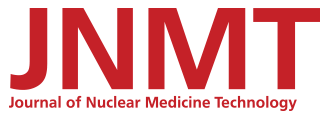
In New Orleans at the Annual Meeting, I spent a fair amount of time answering one question. “Just What Does the SNM Leadership Do?” As I would go into my spiel, I would get responses like “That’s nice, but it really doesn’t affect me.” After responding to that question for 2 days, I felt I needed to explain what we’re doing and why. It doesn’t matter if you are a member of the SNMTS or not, if you are a nuclear medicine technologist, what we do does affect you! The leadership of the SMNTS (as well as the SNM) is dedicated to advancing the art, science and practice of Nuclear Medicine. Below I will list just some of the activities that advancing nuclear medicine involves. Some activities may be obvious, but others may surprise you.
Education. The SNM is considered the primary source of education in nuclear medicine. From the PET Learning Centers to the Reimbursement Roadshows to the annual and mid-winter meetings to our distance learning programs to the articles in the journals, we are continuously striving to find new delivery methods that will make high level education available to the members.
Publications. The JNMT, JNM, and Uptake are all accessible online as well as by hardcopy. You can also order other publications such as books, clinicians’ guides, self-study guides, speedy CE guides, and various other publications online as well.
Workforce. The SNM Workforce Task Force has been busy assessing the current workforce conditions, collecting data, updating marketing materials, and making recommendations to the SNM Leadership. All indicators point to a shortage that will last at least 10 years; we need to develop a long-term plan to navigate this shortage. I will convene a meeting this fall to focus on developing an SNMTS workforce development plan.
Advocacy. Last year, the SNM selected the law firm, Arent Fox, to assist in strengthening our current Government Relations Program and to focus on specific Federal and state legislative initiatives promoting the practice of Nuclear Medicine. The CARE Act (HR 1214, House version) and RadCARE Act (S 1197, Senate version) will promote minimum education standards for nuclear medicine technologists, radiologic technologists and radiation therapists. The SNMTS also supports the Allied Health Revitalization Act, which will provide scholarships, fund public service announcements, and support other initiatives targeted to alleviate the workforce shortages in healthcare.
On the state level, the SNMTS Government Relations Committee is actively pursuing licensure for nuclear medicine technologists in states where there is licensure and or defined education standards for radiographers or CT technologists. This is critical in the evolving PET/CT world. (Right now there are states where CT technologists are required to be licensed but NMTs are not. Guess who’s doing the PET procedurers for PET/CT in those states?) To assist in this process, we have just rolled out the State Health Policy Liaison (SHPL) Program, our retooled legislative network, which will be the communication infrastructure for our local legislative activists.
Coalition Building. Unless you have been secluded in an undisclosed secure location for the past 12 months, you are aware of the controversy surrounding fusion imaging and the coverage of PET/CT in the trade magazines. Most of the coverage stems from the Consensus Conference that the SNMTS and the ASRT convened July 2002 in New Orleans, LA. Both organizations are working with the PET/CT stakeholders within nuclear medicine, radiology, and radiation therapy to establish career pathways and curricula for those performing PET/CT. Coalitions are being built among the professional associations, certification boards, accreditation bodies, state radiologic boards, and camera and radiopharmaceutical manufacturers. Outreach to our liaison organizations is paramount to our success in solving these interdisciplinary, cross-modality issues.
Practice Management. The SNMTS is involved in developing and approving documents that define the practice of nuclear medicine technology such as:
The Nuclear Medicine Technologist Scope of Practice
The Performance and Responsibilities Guidelines for the Nuclear Medicine Technologist
The Curriculum Guide for Educational Programs in Nuclear Medicine Technology
The Guide to Developing Employee Assessments and Competencies
These documents are necessary for various reasons including implementation of the CARE Act (once it is passed), implementing state licensure acts, and assisting in JRCNMT accreditation.
As you can see from this abridged list, the leadership of the SNMTS is involved in more than running a few committees. A whole army of volunteers is at work keeping your profession professional. We thank you for your continued support of the SNM and the profession. Your membership allows the leadership to continue providing these services and others and to expand our programs to keep up with evolving technology.
As always, if you have any comments, you can reach me at lyn.mehlberg@ aurora.org. I look forward to hearing from you.







